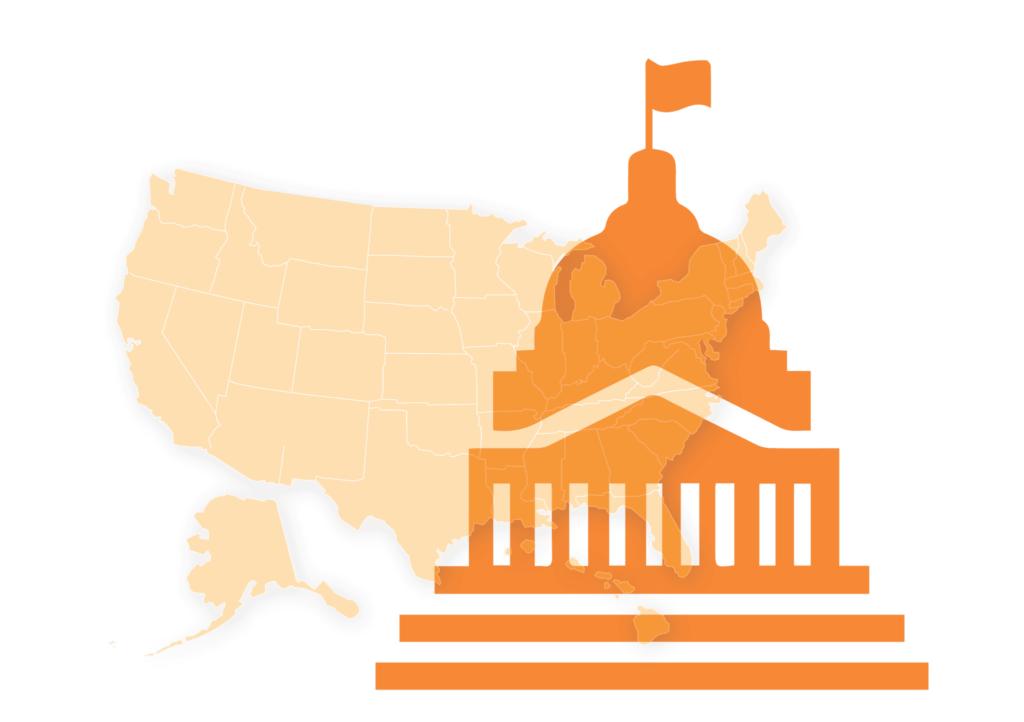Dear Chairwoman DeLauro, Chairwoman Murray, Ranking Member Cole, and Ranking Member Blunt,
The undersigned organizations write to you with funding level requests for Fiscal Year 2023 (FY23). The requests contained within this letter pertain to federal funding for educator preparation programs included in the FY (Fiscal Year) 2023 Labor, Health, and Human Services, and Education Appropriations bill (Labor-HHS-ED) and center on essential programs designed to ensure a high quality and diverse teacher workforce.
Teacher residencies
The Teacher Quality Partnerships (TQP) program in Title II, Part A of the Higher Education Act (HEA) offers competitive grants that promote formal collaboration between educator preparation programs, school districts, and other entities to design, implement, or enhance rigorous teacher residency programs. Research finds that high-quality teacher residencies—which include a full year of compensated student teaching under the mentorship of an excellent teacher while engaging in aligned coursework—are associated with greater teacher diversity, retention, and long-term effectiveness. The U.S. Department of Education recently clarified that the TQP program can also be used to support some types of Grow Your Own (GYO) educator programs. GYO programs are a popular strategy for addressing subject-area teacher shortages and increasing the racial, ethnic, and linguistic diversity of the teacher workforce. Congressional appropriators should include report language that would ensure that TQP continues to support GYO models moving forward.
Additionally, the nation’s growing English learner (EL) student population needs a robust teacher workforce equipped with the knowledge and skills to teach them. While this population has grown 32% since 2001, 31 states across the country are experiencing shortages of EL teachers, which will only exacerbate the academic achievement gap between ELs and their native English-speaking peers. Therefore, we recommend report language be added that would encourage TQP applications that would support the development and strengthening of high-quality teacher preparation programs that enable graduates to meet licensure or certification requirements to teach ELs.
The Teacher Quality Partnerships program received $59.09M in the recent FY22 omnibus, an increase of $9.09M. In order to continue to build on that increase, and the increase proposed in the President’s FY23 budget, Congress should increase the overall funding level of TQP to $300 million in FY23.
Diversifying the educator pipeline
The Augustus F. Hawkins Centers for Excellence program is another HEA Title II program focused on improving educator preparation and diversity, specifically by strengthening programs at Historically Black Colleges and Universities (HBCUs), Tribal Colleges and Universities (TCUs), and other Minority Serving Institutions (MSIs). Funds from this competitive grant program can be used to provide extensive clinical experience and financial aid to prospective teachers, which could help to eliminate a key barrier to a diverse educator workforce due to students of color being more heavily impacted by the prohibitive cost of college and subsequently substantial amounts of student loan debt. Additionally, the COVID-19 pandemic has also exacerbated ongoing teacher shortages, especially for teachers of color.
Additional investment in Hawkins will be most meaningful if awards to institutions emphasize:
- Prior success with recruitment and successful licensure of candidates of color
- Plans to use funds to provide needed academic and financial support to candidates
- Plans to include extensive preservice clinical training and mentoring by exemplary teachers, as with high-quality teacher residency models
- Collection and reporting of key inputs and outcomes, such as the number and percentage of candidates of color that successfully complete the program within the expected timeframe
To effectuate the above, we recommend including the following report language:
“The Committee recognizes the importance of high-quality teacher preparation on student learning and teacher retention, and therefore directs the Secretary to prioritize grants to eligible institutions that propose to establish or scale up high-quality teacher preparation pathways that offer extensive preservice clinical training and mentoring by exemplary teachers in grade and subject areas deemed high need by their state. The Committee also recognizes the value of a racially diverse teacher workforce and directs the Secretary to prioritize grants to eligible institutions that commit to increasing the number and proportion of students of color they serve by providing scholarships or grants, based on financial need, as well as academic supports to help teacher candidates successfully complete the preparation program and state licensure requirements, and to publicly report on these efforts and outcomes.”
Congress recognized that this program was long overdue for funding in the prior appropriations cycle and invested $8 million in the Augustus Hawkins Centers of Excellence Grant program in the FY22 omnibus. A recent House Dear Colleague letter in support of increasing funding to the program to $40 million garnered thirty-four signatures. Increasing Congress’ investment in Hawkins to at least $40 million would provide increased critical funding to these key institutions to provide increased and enhanced clinical experiences and increased financial aid to prospective teachers of color.
Developing educators to serve students with disabilities
The personnel preparation program under Part D of the Individuals with Disabilities Education Act (IDEA) supports the development of educators to serve students with disabilities. Increasing investments in IDEA Part D personnel preparation will support educator preparation programs that are developing teachers of students with disabilities and specialized instructional support personnel (SISP), a critical and pressing need for the entire nation that has only been exacerbated by the pandemic.
The IDEA Part D personnel preparation program helps to support educator training activities in high priority areas and ensure that special education personnel are fully qualified and possess the skills and knowledge needed to serve children with disabilities. At the same time, given the more demanding nature of special education teachers’ jobs, the provision of additional training and credentials may not be sufficient to ensure we have enough of them. These funds can also be used to promote effective GYO strategies to improve educator diversity, such as partnerships and training between institutions of higher education and local education agencies to develop programs for paraprofessionals to become special education personnel, and other allowable uses.
Increasing Congress’ investment in to $300 million in FY23 would provide vital funding to help our education system tackle the inherent challenges for educators of students with disabilities and specialized instructional support personnel (SISP) exacerbated by the COVID-19 pandemic.
Strengthening and supporting school leaders
The School Leader Recruitment and Support Program (SLRSP) is the only federal program specifically focused on investing in evidence-based, locally driven strategies to strengthen school leadership in high-need schools. According to a poll conducted by the National Association of Secondary School Principals (NASSP), 45 percent of principals report that pandemic working conditions are accelerating their plans to leave the profession. A recent NAASP survey found that just one-third of principals feel satisfied in their roles, a significant drop from the 63 percent who were satisfied pre-pandemic. Job satisfaction among principals is at an all-time low, with almost four out of ten principals expecting to leave the profession in the next three years. Approximately one out of three principals have received threats stemming from pandemic-related political tensions, further accelerating plans to leave the profession.
Research shows that strong school leaders have a powerful multiplier effect, dramatically improving the quality of teaching and raising student achievement in a school. In fact, principals account for a quarter of a school’s effect on student achievement. Research also shows that leaders of color provide more rigorous academic opportunities for students of color, while fostering school environments that are more supportive and sustainable for teachers of color. For example, researchers at Vanderbilt University found that Black and Hispanic students are better represented in gifted programs when they attend schools led by principals who share their racial/ethnic identity. And researchers at the University of Missouri have found that teachers of color have higher levels of job satisfaction and lower turnover rates if their principal is also a person of color. Funds from this program could be directed toward grantees focused on both strengthening and diversifying the school leader workforce.
Congress should restore funding by allocating $40 million for SLRSP, in line with the FY23 President’s Budget and a moderate increase from what was included in the FY22 Senate Labor-HHS-ED appropriations bill.
Thank you for your consideration. We appreciate the efforts made by Congressional appropriators to allocate funding to ensure our educator workforce has access to the training and resources they need, especially to connect with the lived experiences of the students they are teaching. We look forward to collaborating with you on our shared goals in the months to come.
Sincerely,
Center for American Progress
Education Reform Now
National Center for Learning Disabilities
National Council on Teacher Quality
New America’s Education Policy program, PreK-12 division
Teach Plus
The Education Trust
UnidosUS







 July 21, 2021 by
July 21, 2021 by 